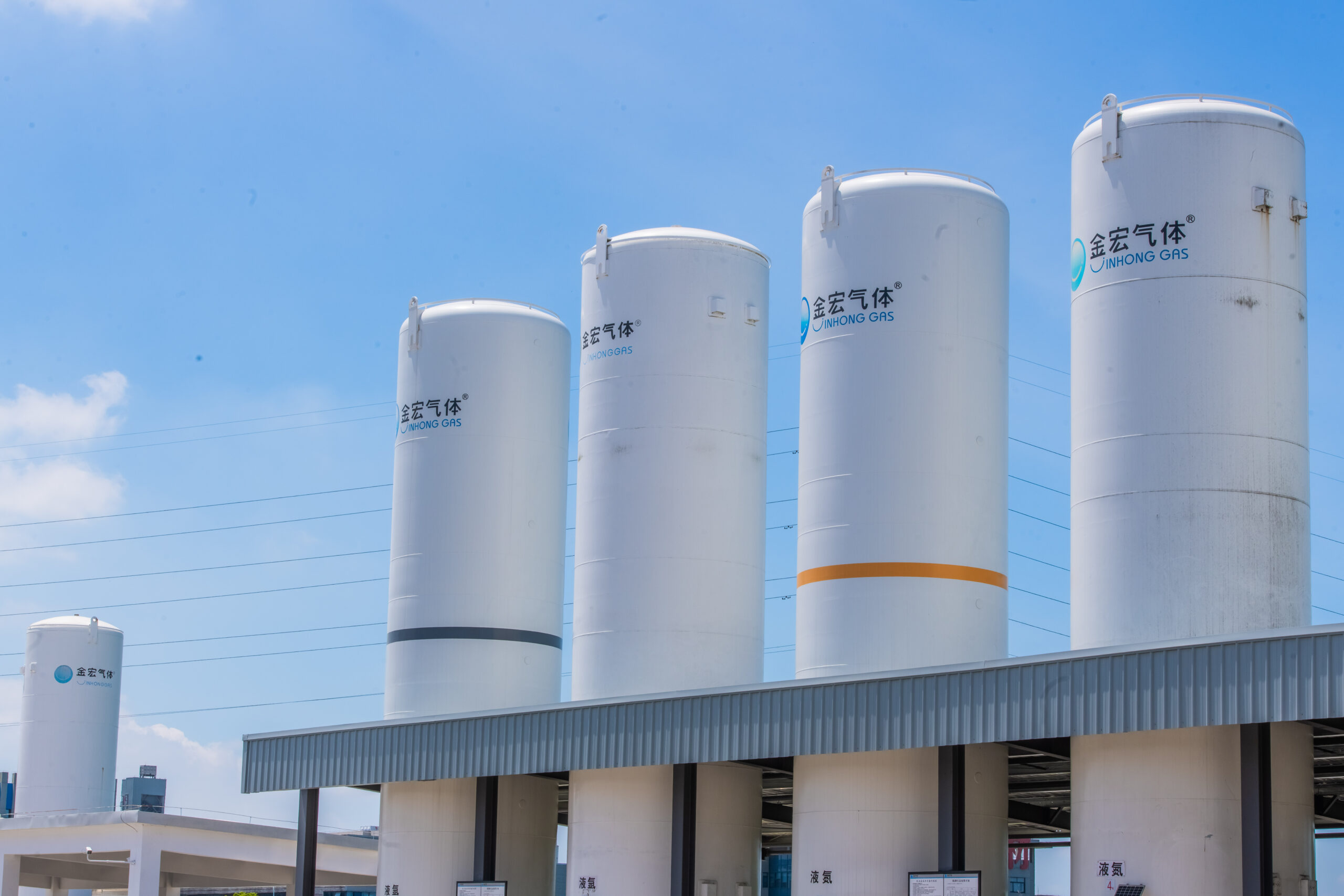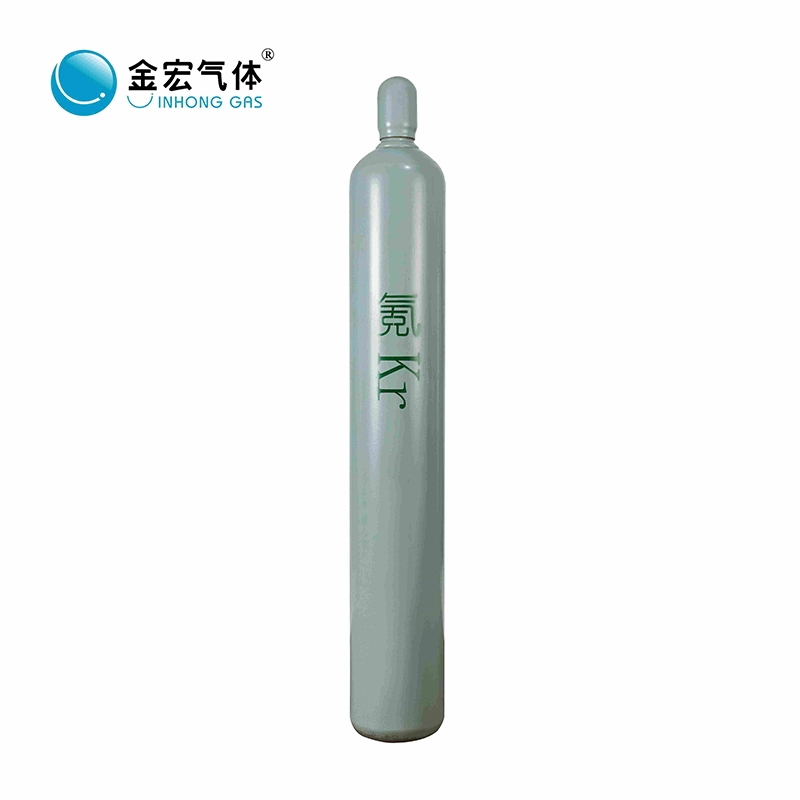What Are Specialty Electronic Gases?
Electronic gases, which include specialty and bulk electronic gases, are essential materials used in the manufacturing of integrated circuits, display panels, semiconductor lighting, and photovoltaic products. These gases are indispensable throughout various production processes in the electronics industry.
Figure: Main Categories of Electronic Gases
| Category | Application | Key Products |
|---|---|---|
| Electronic Specialty Gases | Chemical Vapor Deposition (CVD) | Oxygen, Nitrogen, Nitrous Oxide, TEOS (Tetraethyl Orthosilicate), TEB (Triethylborate), TEPO (Triethyl Phosphate), Phosphine, Arsine, Diborane, Ammonia, Silane, Disilane, Tungsten Hexafluoride, Hexamethyldisilazane, Carbon Tetrachloride, Methane, etc. |
| Ion Implantation | Arsine, Trifluoromethane, Phosphine, Boron Trichloride, Diborane, Tetrafluoromethane, Nitrogen Trifluoride, Hydrogen, etc. | |
| Photolithography / Diffusion | Oxygen, Nitrogen, Hydrogen Chloride, Boron Trifluoride, etc. | |
| Etching | Oxygen, Carbon Tetrafluoride, Octafluorocyclobutane, Hexafluoroethane, Trifluoromethane, Dichlorodifluoromethane, Hydrogen Bromide, Chlorine, Hydrogen Chloride, Nitrogen Trifluoride, Sulfur Hexafluoride, etc. | |
| Doping | Phosphine, Arsine, Trimethylgallium, Trimethylindium, Trimethylaluminum, Trimethylborate, Diborane, Phosphorus Oxychloride, Boron Trichloride, etc. | |
| Bulk Electronic Gases | Environmental Protection, Carrier Gas | Oxygen, Nitrogen, Hydrogen, Carbon Dioxide, etc. |
Source: JinHong Gas IPO Prospectus
Application Areas
1. Integrated Circuit Manufacturing
Specialty electronic gases are crucial supporting materials in the production of integrated circuits. They are widely used in processes such as photolithography, etching, film deposition, cleaning, doping, and deposition. These gases demand high purity, stability, and specialized packaging. As such, they are often referred to as the “grain” and “lifeblood” of the semiconductor industry.
The production of integrated circuits involves thousands of complex steps and requires the use of hundreds of specialty gases. Depending on the process, these gases are categorized into doping gases, ion implantation gases, cleaning gases, etching gases, and lithography gases.
2. Other Industries
- Display Panels: Key processes include cleaning, etching, and thin-film deposition. Chemical vapor deposition (CVD) on glass substrates often uses gases like nitrogen trifluoride (NF₃), silane (SiH₄), phosphine (PH₃), and ultra-high-purity ammonia (NH₃).
- Photovoltaics: Main processes include diffusion, thin-film deposition, and etching. For example, phosphorus oxychloride (POCl₃) and oxygen are commonly used in diffusion steps.
Figure: Classification of Specialty Gases in Various Industries
| Application Field | Process | Key Products |
|---|---|---|
| Integrated Circuits | Cleaning, Etching | Trichlorosilane, Hexachlorodisilane, Hexafluorobutadiene, Octafluorocyclobutane, Hexafluoroethane, Ammonia, Oxygen, Nitrogen, Hydrogen, Chlorine, Hydrogen Chloride, Sulfur Hexafluoride, etc. |
| Film Deposition | Tungsten Hexafluoride, Silane, Dichlorosilane, Phosphine, Arsine, Ethylene, Disilane, Ammonia mixtures, Inert gases, etc. | |
| Photolithography | Ammonia, Ammonia-containing mixtures | |
| Ion Implantation | Phosphine, Arsine, Tetrafluoromethane, Trifluoromethane, etc. | |
| Others | Hexamethyldisilazane, Tungsten Hexafluoride, Titanium Tetrachloride, Chlorine Trifluoride, Nitrous Oxide, etc. | |
| Display Panels | Film Deposition, Cleaning | Trichlorosilane, Silane, Oxygen, Nitrous Oxide, Ammonia mixtures, Nitrogen trifluoride-containing mixtures, etc. |
| LEDs | Epitaxy | Phosphine, Arsine, Trifluoromethane, Hydrogen, etc. |
| Photovoltaics (Solar) | Diffusion, Thin Film Deposition, Etching | Trichlorosilane, Silane, Oxygen, Tetrafluoromethane, etc. |
Source: JinHong Gas IPO Prospectus
Overview of Major Specialty Electronic Gases
The top 10 specialty electronic gases account for approximately 56% of the market share, with key products including nitrogen trifluoride (NF₃) and tungsten hexafluoride (WF₆).
1. Nitrogen Trifluoride (NF₃)
A colorless, odorless, stable gas at room temperature, NF₃ is a powerful oxidizer with excellent etching rates and selectivity, particularly for silicon and silicon dioxide. It leaves no residues on etched surfaces, making it ideal for plasma etching and chamber cleaning in semiconductor, flat panel display, and photovoltaic (amorphous silicon solar cells) manufacturing.
Production methods include:
- Electrolysis (commonly used in China)
- Chemical Fluorination (mainly used in the US and Europe)
2. Tungsten Hexafluoride (WF₆)
The only stable fluoride of tungsten, WF₆ is highly corrosive and adaptable under different conditions. In electronics, it is primarily used in integrated circuits to form tungsten metal films through chemical vapor deposition. These films serve as high-conductivity interconnects and contact layers.
Production involves reacting tungsten powder with fluorine gas, followed by multiple purification steps, including distillation, to achieve purities above 99.999%. Approximately 76% of WF₆ is used in the semiconductor industry.
3. Hexafluorobutadiene (C₄F₆)
Used in advanced etching processes for large-scale ICs, C₄F₆ offers faster etch rates, higher selectivity, and better aspect ratios than traditional etchants. Core technology is currently held by companies in Russia, Japan, and South Korea. While domestic capabilities are improving, high-end electronic-grade C₄F₆ is still largely imported.
4. Hexafluoroethane (C₂F₆)
Known for its stability and non-toxicity, C₂F₆ dominates the perfluorocarbon market, making up about 50%. It’s used in refrigerants, etching agents, cleaners, and healthcare. China largely relies on imports, although companies like Huate Gas and CSSC Special Gas are working on domestic production. Huate is a leading producer of electronic-grade C₂F₆.

5. Sulfur Hexafluoride (SF₆)
Produced by reacting elemental sulfur with fluorine gas at high temperatures, SF₆ is divided into industrial and electronic grades. Industrial SF₆ is used in power transmission and control systems, while electronic-grade SF₆ is used in semiconductor and display manufacturing for etching and cleaning. China’s supply is sufficient, with companies like Jac Sci-Tech, Haohua, and others actively producing.
6. Octafluorocyclobutane (C₄F₈)
Also known as perfluorocyclobutane, this environmentally friendly gas is non-toxic, stable, and ozone-safe. It’s used in high-voltage insulation, VLSI etching, refrigerant mixtures, aerosols, cleaning agents, and more. Industrially produced via polymerization.
7. Octafluoropropane (C₃F₈)
A high-purity gas used in plasma etching and cleaning processes during semiconductor device fabrication. As demand for precision etching grows, the required purity level now exceeds 99.999%.
8. Silane (SiH₄)
A compound of silicon and hydrogen, including monosilane (SiH₄), disilane (Si₂H₆), and others. It is widely used in the semiconductor and photovoltaic industries for manufacturing solar cells, flat panel displays, and coatings. Chinese producers mainly use the magnesium silicide method, while foreign producers prefer electrochemical methods.
9. Silicon Tetrachloride (SiCl₄)
Available in industrial and high-purity grades, SiCl₄ is used in fiber optics, integrated circuits, and aerogels. Semiconductor-grade SiCl₄ is essential for optical fiber preform production, while electronic-grade SiCl₄ is a high-end chemical used in deposition and etching, currently mostly imported.
10. Phosphine (PH₃) & Arsine (AsH₃)
Critical in semiconductor processes, especially in IC production and LED CVD processes. Arsine is highly flammable, explosive, and toxic. Phosphine is a key N-type dopant used in CVD, GaP material growth, ion implantation, MOCVD, and passivation layer manufacturing. Arsine is used in N-type silicon doping, ion implantation, and in growing GaAs and GaAsP.
11. Lithography Gases
These include rare gases like helium, neon, argon, krypton, and xenon, essential in lithographic processes during semiconductor manufacturing. They serve two roles:
- As laser mediums in lithography systems, generating precise light for creating circuit patterns.
- In plasma etching, removing unprotected photoresist layers.
Electronic specialty gases play a critical role in the manufacturing processes of high-tech industries such as semiconductors, display panels, LEDs, and photovoltaics. These gases are used in a wide range of processes including cleaning, etching, film deposition, photolithography, ion implantation, and more.
In the integrated circuit industry, gases like trichlorosilane, silane, and tungsten hexafluoride are essential for cleaning and thin-film deposition. In display panel manufacturing, a combination of silane, nitrous oxide, and ammonia mixtures is widely used. LED production relies heavily on phosphine and arsine during epitaxy processes. Meanwhile, the photovoltaic sector utilizes silane and tetrafluoromethane in diffusion and thin-film deposition processes.
Each application requires extremely high gas purity and stability to ensure performance, yield, and safety in precision manufacturing environments.
Need Specialty Gases? Let Us Help You.
If your company is looking for a reliable partner to source high-quality electronic specialty gases, we’re here to help. We provide comprehensive sourcing services for a wide range of specialty gases tailored to the needs of the semiconductor, display, and photovoltaic industries. Our team ensures quality control, compliance, and timely delivery – so you can focus on innovation.
📩 Contact us today to learn more about our specialty gas solutions.



